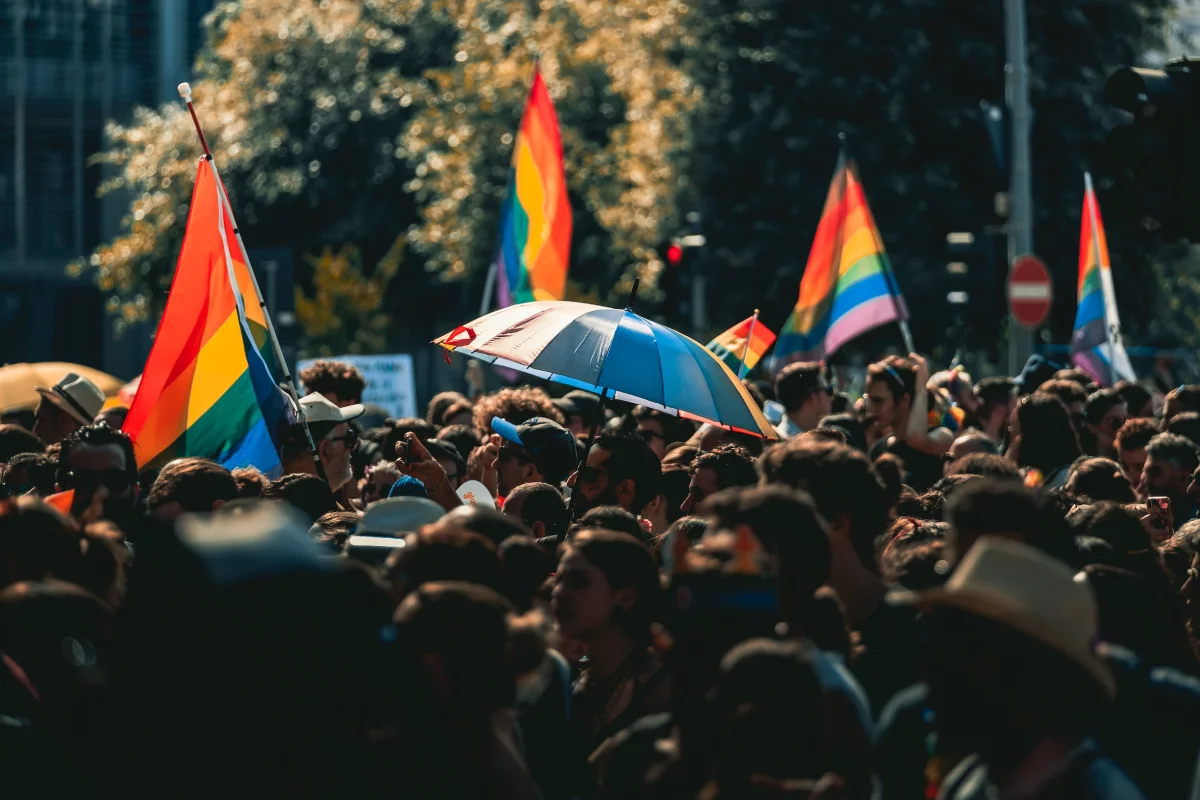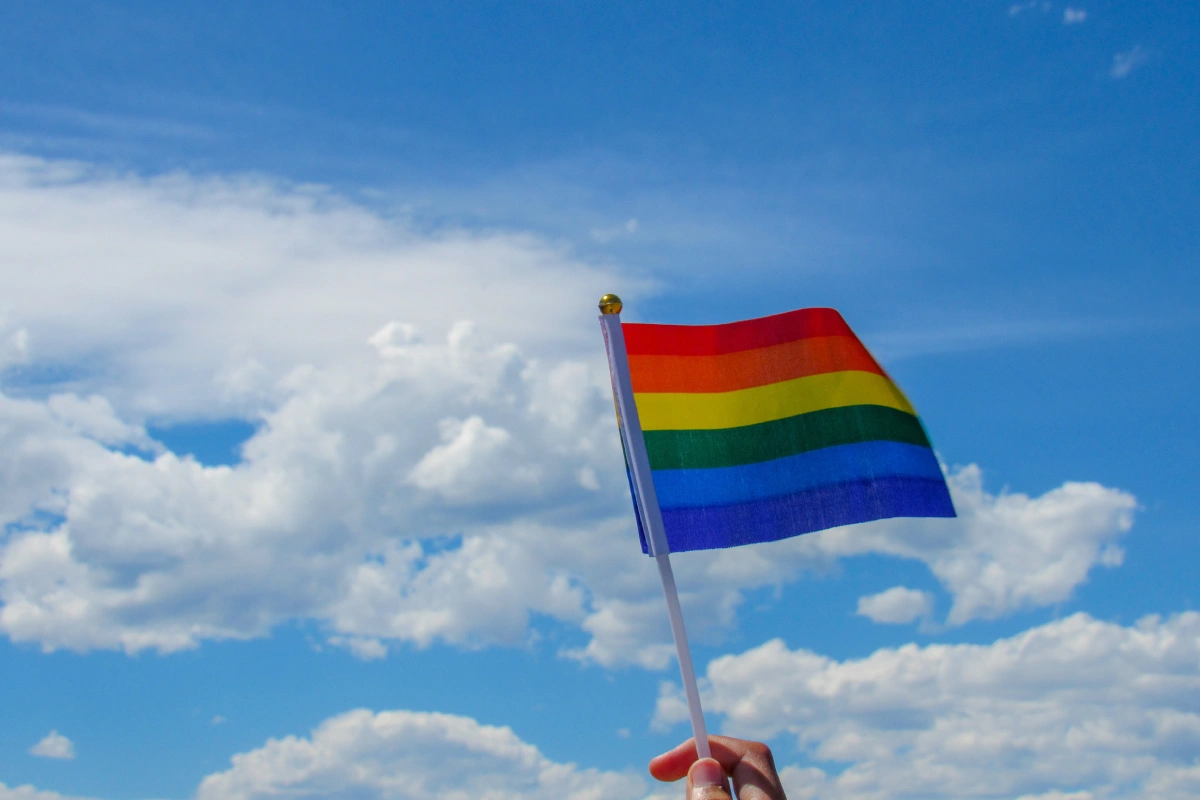Happy Pride Month! Despite the fact that the LGBTQ+ community is still facing challenges (with the ACLU reporting around 491 pieces of anti-LGBTQ+ legislation being floated around the US), there is still much to celebrate.
To honor the impact of the LGBTQ+ community on US history, the Library of Congress recognizes Pride Month. President Bill Clinton initially designated June as Gay and Lesbian Pride Month on June 11, 1999. A decade later, President Barack Obama proclaimed June as Lesbian, Gay, Bisexual, and Transgender Pride Month.
But why is Pride so crucial to US history, you may ask? Here’s all you need to know about Pride Month!
Pride Month: What exactly is it?
Pride Month is a vibrant and empowering celebration that takes place throughout the entire month of June. It serves as a dedicated time to uplift LGBTQ voices, honor LGBTQ culture, and show support for LGBTQ rights. This month-long commemoration encompasses a diverse range of activities, including parades, protests, drag performances, live theater, and memorials to commemorate the lives lost to HIV/AIDS within the community. Pride Month is both a platform for political activism and a joyous celebration of the remarkable achievements made by the LGBTQ community over the years.
Symbolism…
At the heart of Pride Month is the iconic pride symbol—the rainbow flag. Designed by artist Gilbert Baker in 1978, the flag has become synonymous with LGBTQ pride. What many may not realize is that each color on the flag holds its own significant meaning. In the widely recognized six-color flag, red symbolizes life, orange represents healing, yellow embodies sunshine, green signifies nature, blue stands for harmony, and purple represents spirit. The original eight-color flag included hot pink to symbolize sex and turquoise to symbolize magic and art.
Throughout the years, variations of the pride flag have emerged to reflect the evolving nature of LGBTQ rights and inclusivity. In 2021, a modified version of the flag emerged in solidarity with the Black Lives Matter movement. This adaptation added black to represent diversity, brown to represent inclusivity, and incorporated the light blue and pink colors from the trans pride flag.

Why June?
The significance of celebrating Pride Month in June can be traced back to the historic event known as the Stonewall Uprising. On June 28, 1969, a raid took place at the Stonewall Inn, a popular gay bar in New York City’s West Village. While police raids on gay bars were not uncommon at the time, the patrons of the Stonewall Inn decided to fight back, sparking a series of protests and demonstrations that came to be known as the Stonewall Riots. This pivotal event marked a turning point in the Gay Liberation Movement and paved the way for increased visibility and advocacy for LGBTQ rights.
The Stonewall Inn holds a significant place in history. In 2015, it was designated as a historic landmark by the city of New York, and in 2016, it was declared a national monument by President Barack Obama. The following year, in 1970, the first Pride parade took place in commemoration of the uprising, marking the beginning of the tradition of celebrating Pride Month with pride parades worldwide.
Eminent Personalities of the Pride Month
As we celebrate Pride Month, it is essential to recognize and honor the remarkable individuals and moments that have shaped LGBTQ history. From Gilbert Baker, the creator of the rainbow flag, to figures like Marsha P. Johnson, Sylvia Rivera, and Stormé DeLarverie, who fearlessly fought for equality and acceptance, their contributions have paved the way for progress and continue to inspire change.
Several remarkable individuals played vital roles in the Stonewall Uprising and the subsequent advancement of LGBTQ rights. Marsha P. Johnson, a Black transgender woman, is often credited with being one of the key figures who initiated the riots. Although there are multiple accounts of who threw the first punch, Marsha P. Johnson’s involvement in the gay community and her activism were transformative. Tragically, she passed away in 1992, and her death was initially ruled as a suicide, although her loved ones contested this ruling.
Sylvia Rivera, a trans-Latina sex worker, and civil rights activist, was another influential figure during the Stonewall Riots. She fought tirelessly for transgender rights alongside Marsha P. Johnson and co-founded the Street Transvestite Action Revolutionaries (S.T.A.R.), an organization aimed at providing housing for homeless LGBTQ youth. Sylvia Rivera continued to advocate for transgender rights until her passing in 2002.
Stormé DeLarverie, a gay rights activist and drag performer, was also present at the Stonewall Inn during the historic raid. Although it is uncertain who threw the first punch, Stormé DeLarverie claimed responsibility and actively participated in the resistance against the police. Her bravery and contribution to the events of that night are deeply admired.

How Can You Celebrate…
Let us brainstorm for you.
Remember, celebrating Pride Month is about honoring the diversity, struggles, and accomplishments of the LGBTQ+ community, and promoting equality and acceptance for all individuals regardless of their sexual orientation or gender identity.
Here are some ways for you to celebrate:
Educate yourself: Take the time to learn about the history and origins of Pride Month. Understanding the significance of the Stonewall Uprising in 1969 and the activism that followed can provide a deeper appreciation for the LGBTQ+ community’s struggle for equal rights and inspire you to support their cause.
Attend Pride parades and events: Join local Pride parades, festivals, and other events organized in your community. These celebrations often include colorful marches, live performances, guest speakers, and opportunities to connect with LGBTQ+ organizations and support groups. Participating in these events can show solidarity and help create a sense of belonging.
Support LGBTQ+ organizations: Consider donating to or volunteering with organizations that work towards promoting LGBTQ+ rights, providing support services, or advocating for equality. Research local or national LGBTQ+ nonprofits and find ways to contribute your time, resources, or skills.
Decorate your space: Show your support by decorating your home or office with Pride-themed decorations. Displaying rainbow flags, colorful banners, or LGBTQ+ artwork can create an inclusive and welcoming environment.

Host a Pride-themed party or gathering: Organize a celebration with friends, family, or colleagues that honors the spirit of Pride Month. Include rainbow-themed decorations, music by LGBTQ+ artists, and activities that promote inclusivity and understanding. You can also use the occasion to raise funds for LGBTQ+ charities.
Engage in LGBTQ+ literature and media: Read books, watch movies, or listen to podcasts that highlight LGBTQ+ stories, experiences, and voices. Supporting LGBTQ+ creators and their work helps foster greater representation and understanding.
Advocate for LGBTQ+ rights: Use your voice to promote equality and justice for the LGBTQ+ community. Share educational resources, engage in conversations about LGBTQ+ issues, and actively challenge discriminatory attitudes or behaviors you encounter. Being an ally involves actively supporting and uplifting marginalized voices.
Engage in Pride Month activities at work: If appropriate, discuss with your colleagues or HR department the possibility of organizing Pride Month activities in your workplace. This could include hosting LGBTQ+ history presentations, organizing charity fundraisers, or encouraging discussions on diversity and inclusion.
Show support on social media: Use your social media platforms to share positive and inclusive messages about Pride Month. Amplify LGBTQ+ voices, share educational resources, and use relevant hashtags to reach a wider audience. However, make sure to approach social media advocacy respectfully and avoid appropriating or trivializing the experiences of LGBTQ+ individuals.
Be an ally year-round: Pride Month is a time for celebration and awareness, but supporting the LGBTQ+ community should extend beyond June. Educate yourself continuously, challenge biases, and advocate for LGBTQ+ rights throughout the year. Strive to create inclusive environments in your personal and professional life.










